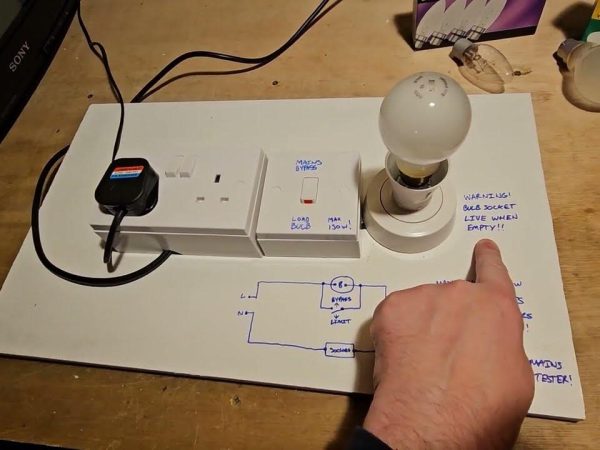Bye Bye in Dutch: 10 Fun and Easy Farewell Phrases
Bye Bye in Dutch: When learning a new language, knowing how to say goodbye is just as important as saying hello. In Dutch, there are many ways to say bye bye, each with its own nuance and cultural context. Whether you’re planning a trip to the Netherlands, studying Dutch, or simply curious about the language, mastering these farewell phrases will enhance your communication skills and help you connect with Dutch speakers. This article will explore 10 fun and easy ways to say goodbye in Dutch, each with examples of how and when to use them.
Bye Bye in Dutch: Dag – The Versatile Goodbye
One of the most commonly used words for saying goodbye in Dutch is Dag, pronounced as dahk. Interestingly, Dag serves a dual purpose in Dutch, meaning both hello and goodbye, much like the Italian ciao or the Hawaiian aloha. This versatility makes Dag an essential word in everyday Dutch conversations.
Whether you’re leaving a store, bidding farewell to a friend, or ending a phone call, Dag is an appropriate choice. It’s simple, effective, and can be used in both formal and informal contexts, making it a go-to word for most situations.
Bye Bye in Dutch: Doei – Casual and Cheerful
If you’re looking for a more casual and friendly way to say goodbye, Doei is the perfect choice. Pronounced doo-ee, this word is widely used among friends, family, and peers. It’s the Dutch equivalent of saying bye or see ya in English.
Doei has a lighthearted and cheerful tone, making it ideal for informal settings. Whether you’re leaving a social gathering, saying goodbye to a coworker at the end of the day, or waving to a neighbor, Doei is a fun and easy way to part ways.
Tot Ziens – Until We Meet Again
Tot Ziens is a phrase that translates directly to until we see each other again, which is similar to the English phrase see you later. Pronounced tot ziens, this expression is slightly more formal than Doei and is suitable for both personal and professional interactions.
You might use Tot Ziens when saying goodbye to a colleague, ending a business meeting, or leaving a store after making a purchase. It’s a polite and thoughtful way to say goodbye, especially when you want to convey that you’ll see the person again in the future.
Tot Later – See You Later
A more informal version of Tot Ziens is Tot Later, which translates to see you later. This phrase is used among friends, acquaintances, or even coworkers when you expect to see them again soon, but not necessarily within the same day. Pronounced tot lah-ter, it carries a relaxed and casual tone.
Tot Later is perfect for when you’re leaving a social event, finishing a casual meeting, or saying goodbye to someone you know you’ll see again soon. It’s a friendly and easygoing way to part ways.
Tot Straks – See You Soon
If you know you’ll be seeing someone again shortly, Tot Straks is the phrase to use. It literally means until later, but is understood as see you soon. Pronounced tot strakhs, this phrase is commonly used when you plan to meet the person again later that same day.
You might use Tot Straks when leaving the house in the morning and planning to see your family later in the day, or when stepping out of the office for a quick break before returning. It’s a warm and familiar way to say goodbye.
Tot Morgen – See You Tomorrow
Tot Morgen, pronounced tot mor-ghen, is the Dutch way of saying see you tomorrow. This phrase is straightforward and used when you know you’ll see the person the next day. It’s common among coworkers, classmates, and friends who have plans to meet again the following day.
Whether you’re leaving work at the end of the day, finishing up a class, or saying goodbye to a friend after an evening out, Tot Morgen is a friendly and simple way to say goodbye.
Bye Bye in Dutch: Houdoe – A Regional Favorite
Houdoe is a unique farewell used predominantly in the southern part of the Netherlands, especially in the regions of Brabant and Limburg. Pronounced how-doo, this phrase combines the words hou (hold) and doe (do), and it roughly translates to take care.
While Houdoe is a regional expression, it’s widely recognized throughout the Netherlands and is often used as a friendly, informal way to say goodbye. If you’re visiting the south of the Netherlands, using Houdoe can be a fun way to connect with locals.
Vaarwel – A Formal Farewell
Vaarwel is a more formal and somewhat old-fashioned way to say goodbye, akin to the English word farewell. Pronounced vaar-vel, this phrase is typically used in situations where you don’t expect to see the person again for a long time, or perhaps ever.
Vaarwel carries a sense of finality and is not commonly used in everyday conversations. However, it might be appropriate in a formal letter, when bidding farewell to someone embarking on a long journey, or in a situation where you want to convey a deep sense of goodbye.
Tot de Volgende Keer – Until Next Time
When you know you’ll see the person again but don’t have a specific time in mind, Tot de Volgende Keer is a great phrase to use. It translates to until the next time and is pronounced tot de vol-gen-de keer.
This phrase is suitable for both formal and informal contexts, and it’s a polite way to express that you’re looking forward to your next meeting. Whether you’re leaving a business meeting, saying goodbye to a friend after a visit, or ending a conversation, Tot de Volgende Keer is a thoughtful and considerate farewell.
Bye Bye in Dutch: De Mazzel – Take Care (Informal)
De Mazzel is a slang expression that originated in Amsterdam but has since spread throughout the Netherlands. Pronounced deh mah-zel, it’s an informal way to say take care or good luck.
This phrase is often used among friends or peers and carries a warm, encouraging tone. It’s a fun and casual way to say goodbye, especially when you want to wish someone well as they go on their way. De Mazzel is perfect for adding a touch of local flavor to your farewells.
Conclusion
Bye Bye in Dutch: Learning these 10 fun and easy Dutch farewell phrases will not only help you communicate more effectively but also allow you to connect more deeply with Dutch culture and its people. From the versatile Dag to the regionally beloved Houdoe, these phrases cover a wide range of contexts and tones, ensuring that you’re prepared for any situation. Whether you’re traveling, studying, or simply curious about Dutch, incorporating these phrases into your vocabulary will enrich your language skills and help you navigate social interactions with ease.
FAQs
1. Can Dag be used to say both hello and goodbye?
Yes, Dag is a versatile word in Dutch that can be used to say both hello and goodbye. It’s appropriate for both formal and informal situations, making it a handy word to know.
2. Is Doei formal or informal?
Doei is an informal farewell, similar to saying bye or see ya in English. It’s typically used among friends, family, and peers.
3. What’s the difference between Tot Ziens and Tot Later?
Tot Ziens is a slightly more formal way to say see you later, suitable for both personal and professional contexts. Tot Later is more casual and often used among friends or acquaintances when you expect to see them again soon.
4. Where is Houdoe commonly used?
Houdoe is a regional farewell used mainly in the southern part of the Netherlands, particularly in Brabant and Limburg. It’s an informal way to say take care and is widely recognized throughout the country.
5. When should I use Vaarwel?
Vaarwel is a formal and somewhat old-fashioned way to say farewell. It’s typically used in situations where you don’t expect to see the person again for a long time or in more formal or literary contexts.
Also read: Dutch Swear Phrases: 10 Powerful Insults to Master Like a Native











